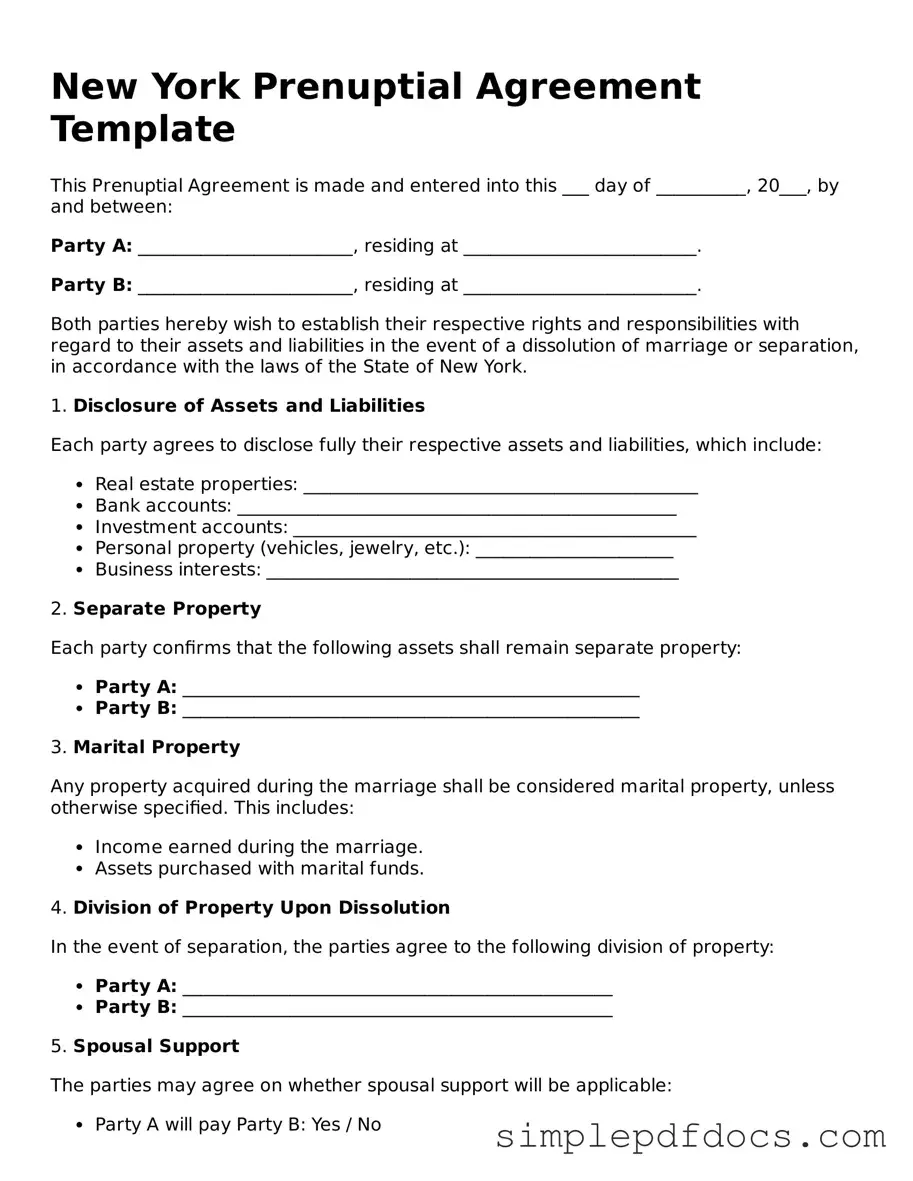Entering into a marriage is a significant milestone, and many couples in New York are considering how to protect their individual assets and future interests through a prenuptial agreement. This legal document serves as a proactive measure to clarify financial rights and responsibilities before tying the knot. A New York Prenuptial Agreement typically outlines how property will be divided in the event of a divorce, addresses spousal support, and specifies the management of debts. Importantly, it can also include provisions for the distribution of assets acquired during the marriage. By clearly stating each party's expectations and intentions, this agreement can help prevent misunderstandings and conflicts down the road. Understanding the key components of the form, including the necessity for full disclosure of assets and the requirement for both parties to voluntarily agree to its terms, is essential for couples considering this route. Ultimately, a well-drafted prenuptial agreement can provide peace of mind and allow couples to focus on building their future together.
